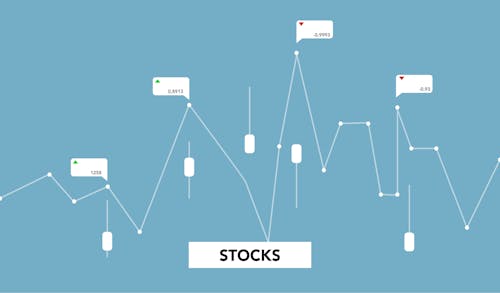Dealing With The Hottest, Yet Most Volatile Stocks

Image Source: Pexels
Investing in the stock market can feel like cooking with a hot pan, especially when dealing with the hottest, yet most volatile stocks. These stocks, which experience significant price swings, offer the potential for high rewards—and equally high risks. To navigate this landscape successfully, you need more than just basic knowledge; you need practical insights and a level-headed approach. Here’s how to tackle the world of volatile stocks with confidence and smarts.
First off, let’s talk research. When you're looking at volatile stocks, it’s not just about following the price ups and downs. Dig deep into the company behind the stock. Check out their earnings reports, revenue growth, debt levels, and the history of their management team. This helps you figure out if the stock’s volatility is just a temporary blip or a sign of deeper issues. Additionally, keep an eye on broader market trends and news affecting the sector the company operates in. For example, tech stocks might be more volatile during periods of regulatory changes or significant innovations.
Having clear goals and limits is another important strategy. Knowing your risk tolerance is essential because high volatility means the potential for both big gains and big losses. Decide in advance what your entry and exit points are. This discipline prevents you from making emotional decisions when the market gets choppy. Also, be mindful of how much of your portfolio you’re allocating to these high-risk stocks. Diversification remains key; don’t bet everything on one or two volatile stocks.
Stop-loss orders can be your best friend in managing risk. These orders automatically sell your stock when it hits a certain price, protecting you from massive losses. Trailing stops are particularly useful because they adjust with the stock’s movements, allowing you to lock in profits while still protecting against downturns. This approach can offer peace of mind and act as a safety net in the unpredictable world of volatile stocks.
Staying informed is vital. Regularly follow news, earnings reports, and announcements related to your stocks. Major events can trigger significant price movements, and being caught off-guard can be costly. Also, keep an eye on social sentiment. While forums and social media can offer valuable insights, they can also be sources of hype and misinformation. Always verify the information from credible sources before making any decisions.
Leveraging technical analysis can enhance your decision-making process. Get familiar with chart patterns and technical indicators like moving averages, RSI, and MACD. These tools can help you identify trends and potential entry or exit points, adding an extra layer of strategy to your investments. For instance, a stock breaking through a key resistance level on high volume might signal a potential buying opportunity.
Accepting that volatility is part of the game is important. Emotional discipline is vital; avoid knee-jerk reactions to short-term price movements. Instead, stick to your strategy and remember that volatility can also present opportunities. Strategies like dollar-cost averaging, where you invest a fixed amount at regular intervals, can help mitigate the impact of volatility and reduce the pressure of trying to time the market perfectly.
Connecting with a community of like-minded investors can provide support and insights. Join forums, discussion groups, and even find a mentor. Experienced investors who have navigated volatile stocks successfully can offer guidance and share strategies that have worked for them. This network can also serve as a sounding board for your ideas and help you stay grounded during turbulent times.
Continuous education is another cornerstone of successful investing. The market is always evolving, and staying updated with the latest strategies and market psychology can give you an edge. Books, courses, webinars, and workshops conducted by market experts are excellent resources for expanding your knowledge and adapting to new market conditions.
Lastly, don’t forget about the tax implications of your trades. Profits from stocks held for less than a year are usually taxed at a higher rate than those held longer. Planning your trades with tax considerations in mind can enhance your net returns and prevent unwelcome surprises come tax season.
More By This Author:
Are Heikin Ashi And Candlestick Patterns The Same?
How To Use MACD To Spot Trend Reversals
The Dream Of Perfect Competition In The Stock Market
Disclaimer: The information provided on this article is for general informational purposes only. It does not constitute professional advice. Please consult with appropriate professionals ...
more


